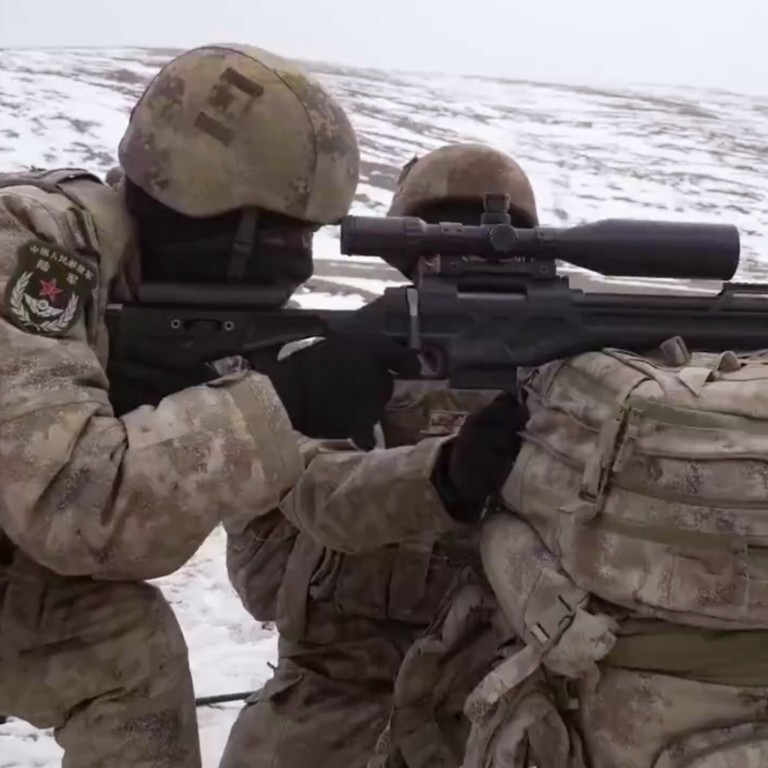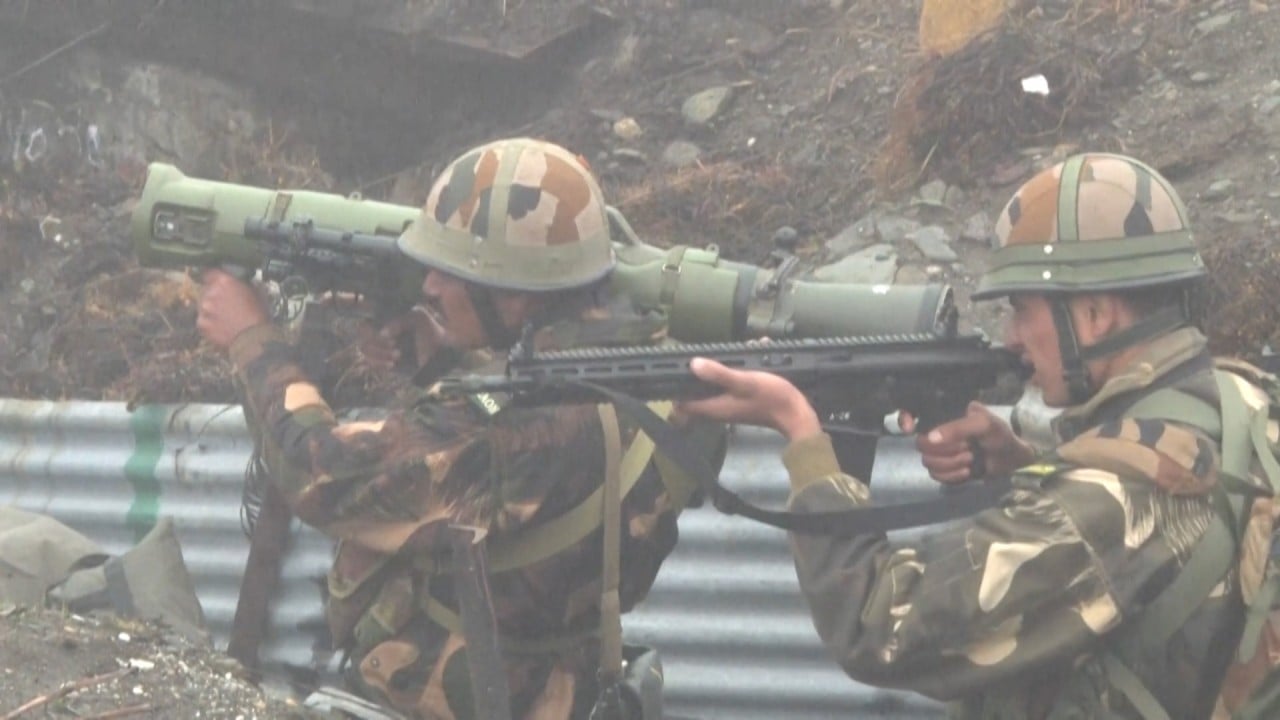
China tests high-altitude weapons performance near border with India
- The PLA’s live-fire precision strike drills for a range of conventional weaponry were carried out in the Karakoram mountains
- Military analysts say the training showed troops had been equipped with specially designed weapons for the extreme conditions
A range of conventional weapons were on display, from sniper rifles to vehicle-mounted remote control weapon systems, mortars, grenade launchers and anti-tank missiles. Military experts said the training indicated the PLA infantries had been equipped with specially designed weapons for high-altitude combat-readiness operations.
“The PLA has introduced precision strike training in Indian border [areas] that aims at controlling more area in future contingencies,” said Macau-based military observer Antony Wong Tong, who added the operation would save manpower and secure the PLA’s defensive capability along the Line of Actual Control (LAC) during the winter.
“The use of the Type 06 semi-automatic grenade launchers and mortars in the recent drill indicated China would deploy the powerful but handy weapons with precision strike capabilities to other disputed border areas,” he said.
The precision shooting drill is just the latest high-altitude battle capability training carried out by the PLA near the border areas with India in the Himalayas after both sides failed to reach agreement to resume talks on disengagement last month.
New Delhi has also ramped up its defences along the disputed border, stepping up the construction of roads and other infrastructure along the LAC, as well as deploying MiG-29UPG and Su-30MKI fighter jets to the region. There are also plans to buy high altitude armed swarm drones for the Indian military.

03:44
India ramps up defences on Himalayan border after deadly clashes with China
Zhou Chenming, a researcher from the Beijing-based Yuan Wang military science and technology institute, said the PLA’s new weapons systems would be able to eliminate Indian outposts, military assets, and other targets.
“According to ballistic computation, there are differences for all guns and artillery systems and even aircraft to operate in plains regions and at high altitudes, due to anoxia and extreme weathers,” he said.
Before China’s military modernisation – accelerated under President Xi Jinping – there was no firing operations data for many of its weapons systems at elevations over 5,000 metres, according to an insider. Today, live-fire tests supported with electronic combat data are carried out at high altitudes for most new weapons.
Modernisation of the PLA’s weaponry began in the late 1990s under former president Jiang Zemin, who studied electronic engineering, and aimed to speed up weapons replacement as part of the goal to transform the military into a modern fighting force on a par with its US counterpart by 2035.
The deadline was brought forward to 2027 – the 100th anniversary of the PLA’s foundation – with China’s leadership announcing in the latest five-year plan that the country should accelerate its military modernisation programme and ensure the PLA becomes a modern army to meet one of the three centennial goals.

